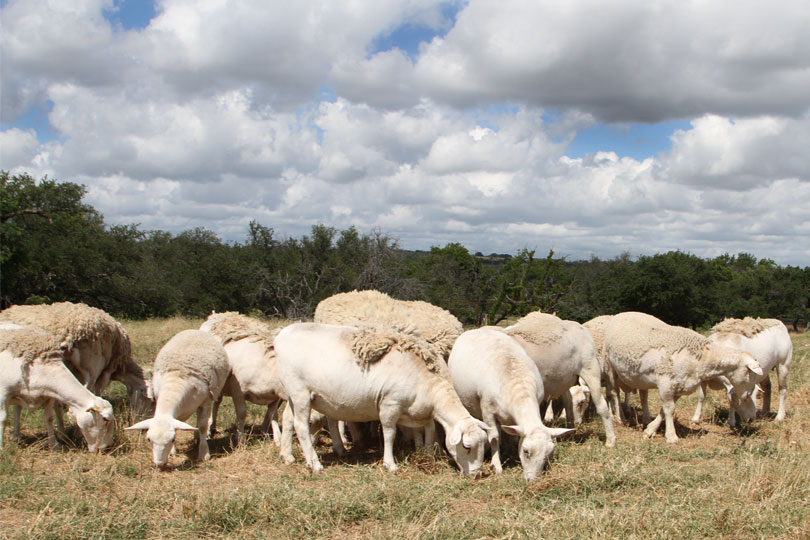By Jennifer Whitlock
Field Editor
The Texas sheep and goat sector remains strong despite COVID-19 sending shock waves across the agricultural economy.
That’s thanks in large part to shifts that occurred in the industry over the past decade, according to Dr. Reid Redden, director of the Texas A&M AgriLife Research and Extension Center at San Angelo.
“In Texas, the lamb and goat industry has fared very well throughout the COVID pandemic. And the prices and the market have been really good,” Redden said in an interview with the Texas Farm Bureau Radio Network. “The traditional lamb industry had suffered some pretty serious losses from March 2020 throughout the whole summer, primarily due to the shutdown of all the restaurants. Somewhere in the neighborhood of half of all the lamb that’s produced in the U.S. through the traditional channels goes to those restaurants, hotels, resorts. That market basically, like a lot of places, went away overnight, so it had a big impact on it.”
But over the last decade, Texas transitioned to a non-traditional market, supplying animals to a different production chain. The traditional sheep and goat industry mimics the beef industry where ranchers raise lambs and kids to weaning stage before the animals go to backgrounders, feeders and then meatpackers to be processed into retail or wholesale cuts and distributed across the nation.
Redden noted about 75 percent or more of the Texas sheep industry provides lighter-weight lambs to primarily ethnic markets where consumers seek different cuts of meat than the typical American grocery store shopper.
“We’re talking more about recent immigrants into the U.S. from Africa, Middle East, Southeast Asia, different parts of the world that eat lamb all the time. But they don’t really eat lamb like we do,” he said. “They don’t go buy a package of lamb chops. They’re buying a whole lamb or half a lamb and cooking them using their traditional techniques. But they also don’t want to purchase a big animal, so we’ve transitioned away from producing those.”
Most lambs at harvest are about half the weight of traditionally-raised animals, ranging from 50 to 80 pounds. Redden said many of those lambs come straight from the pasture.
“They may background a little bit, but they’re not going through a production system,” he said.
There’s been a shift in breed selection, too.
Redden noted larger-framed wool sheep breeds used to be the norm on Texas ranches. But hair sheep breeds like Dorper, St. Croix and other Barbados breeds are more popular selections now, due to their smaller frames. Wool sheep ewes weigh about 140-180 pounds, but hair sheep ewes are only around 90-130 pounds when fully grown.
Seasonally, there is higher demand based around Muslim holidays for animals without blemishes, so some ranchers are also turning away from practices like docked tails, notched ears and castration.
“At times, the buyers will even pay a premium for that type of animal outside of the holiday season,” Redden said. “It’s just supply and demand. There’s a larger demand for non-traditional lambs and goats than what the supply is for the most part.”
That’s because most of the lambs in Texas are born in late fall, winter or early springtime and reach harvest weight between three and eight months of age. The largest supply of lambs in Texas runs from April through August, then drops throughout fall and winter. But demand doesn’t waver during those periods of low supply, which leads to premium prices for lambs, according to Redden.
The Texas sheep and goat industry is more resilient to the initial shock of the pandemic because of its infrastructure, Redden noted.
“The majority of lambs that are going to the primary auctions in San Angelo, Fredericksburg, Goldthwaite and Hamilton are shipped live to major metropolitan areas across the nation and are then harvested at smaller meat processors,” he said. “The pandemic didn’t really have an impact on the lamb and goat market here because of that diversity. We don’t have just one or two major packers, where if there’s a COVID-19 outbreak it may have to shut down for two weeks and causes huge market disruptions. There are just so many small packing plants spread across the U.S. that we don’t have that issue with lambs and goats.”

